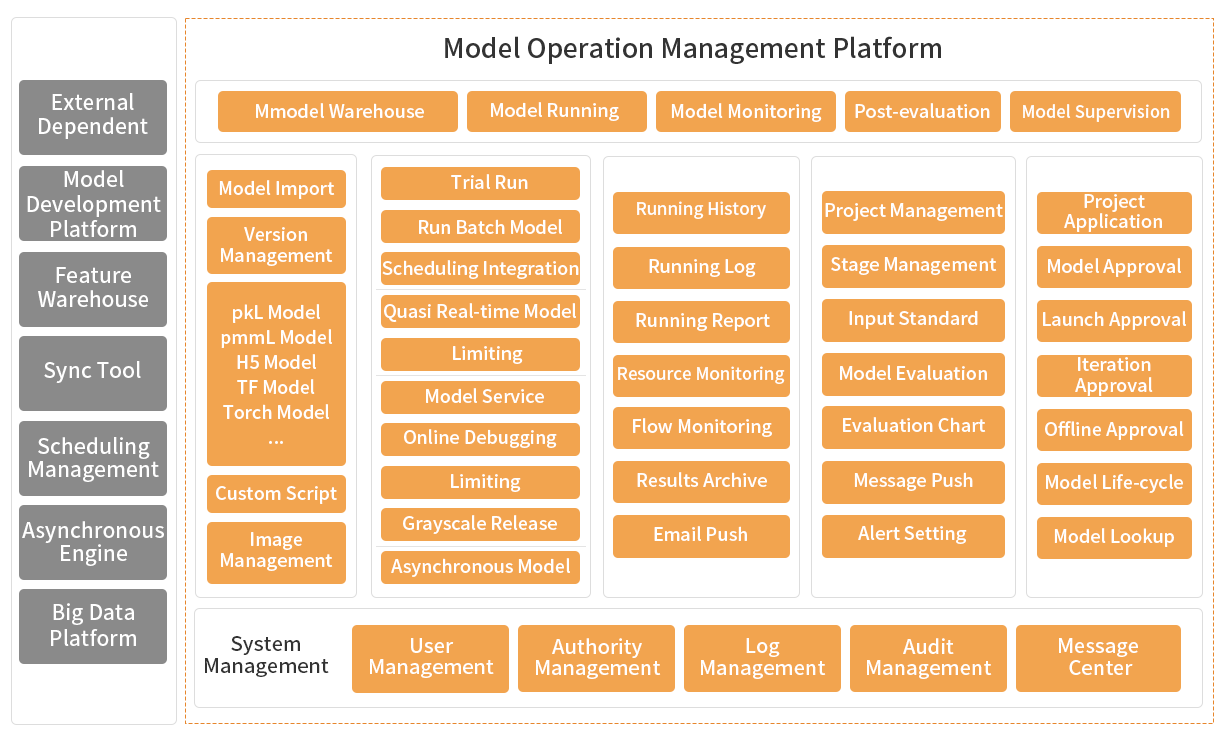
MODELOPS SOLUTION
-
Model asset fragmentation
Model assets lack centralized management, information security assurance, and automated inventory tools. It is difficult to reuse model assets and deposit model assets as important production factors of banks.
-
Inadequate model management automation
Management steps such as model verification and approval, and engineering operations such as model deployment and launch are less automated, and model management has not formed standardized processes and standardized operations.
-
Incomplete monitoring system
The lack of unified model monitoring, especially the lack of an indicator system to monitor and evaluate models from the business dimension, makes it difficult for traditional report monitoring methods to meet the dynamic monitoring of the whole life cycle of models and the closed-loop management of models from post evaluation to early warning to processing.
-
Lagging model optimization and iteration
Since there is no closed-loop system for model launch, monitoring and retraining, this process lacks the support of automated processes, which leads to the continuous decline of model performance and affects business performance.
The enterprise's unified AI model management platform based on DataCanvas ModelOps solution can realize the unified management of model assets by interfacing with various different model training frameworks or platforms, realize the configurable model approval process, and apply different approval processes for different types/levels of models.
The platform provides comprehensive model monitoring indicators, and can automatically adapt corresponding model monitoring indicators for different types of models. Through the backflow of the engineering landing model data, the closed-loop of the model monitoring data is realized: the model is automatically iterated, cooperating with the model online monitoring, obtaining the latest training data, and realizing the regular retraining of the model or threshold triggered retraining. The whole process can be automated and the model iteration cycle can be shortened to a greater extent.


-
Model life cycle management
Further expand on the basis of ModelOps, pull through feature management process, model management process, model engineering process and application development process, and truly realize the full life cycle management of models.
-
Unified AI asset management
Build asset libraries such as features, models, and monitoring indicators, and achieve global control of resources through centralized management of assets. Combined with access permission control, ensure asset security and promote AI asset sharing and reuse.
-
Agile model deployment
Combined with the model launch process automation, reduce the threshold of model deployment, enhance the continuous delivery capability and other means, improve the response efficiency of model requirements, and achieve rapid iteration of business functions.
-
Closed loop management of model
The multi-dimensional monitoring of the model is realized through configuration and visualization, including different dimensions such as model operation indicators and model business indicators. Realize closed-loop management from model monitoring, model pre-warning to pre-warning processing.
-

 Normative model management
Normative model management -

 Agile continuous delivery
Agile continuous delivery -

 Capitalization of model achievements
Capitalization of model achievements -

 Intelligent monitoring system
Intelligent monitoring system
- Try AIFS:AI Foudation Software & Services
- Hotline:+86 400-805-7188
- E-mail:contact@zetyun.com
- Join Us:hr@zetyun.com











